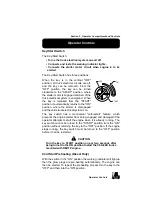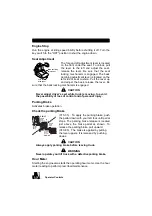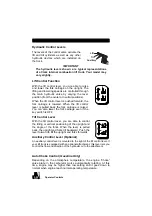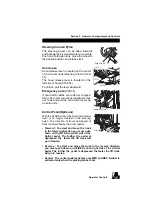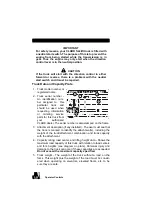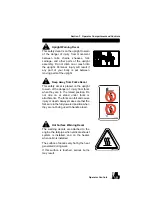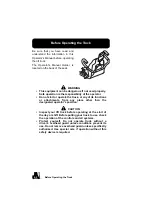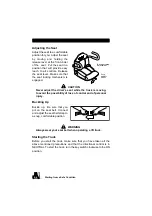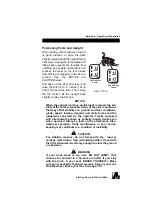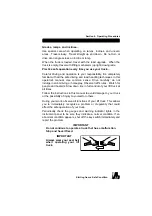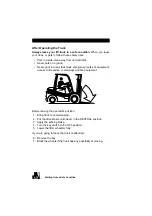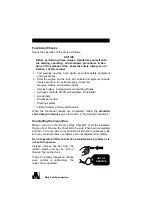
Starting from a Safe Condition
4-5
Section 4. Operating Procedures
Positioning Forks and Upright
When driving, with or without a load, it
is good practice to have the forks
slightly raised and tilt the upright (forks)
backward. Having the forks raised and
tilting back prevents the fork tips from
catching on possible obstructions and
reduces the wear on the fork blades
from striking or dragging on the floor or
ground. See the NOTICE and
CAUTION below.
Pull back on the lift control lever and
raise the forks 6 to 8 inches (152 to
203 mm) above the floor. Then, using
the tilt control, tilt the upright back
slightly to raise the fork tips.
NOTICE
When the upright (carriage and/or load) is raised, the sta-
bility of the truck is reduced. Some of the other conditions
that may affect stability are: ground and floor conditions,
grade, speed, loading, dynamic and static forces and the
judgement exercised by the operator. Trucks equipped
with attachments behave as partially loaded trucks even
when operated without a load on the attachment. Also,
improper operation, faulty maintenance or poor house-
keeping may contribute to a condition of instability.
CAUTION
!
For stability reasons, do not travel with the load or
carriage raised into a high (elevated) position. Travel with
the lift mechanism raised only enough to clear the ground
or obstacles.
WARNING
!
If your truck starts to tip over, DO NOT JUMP! Your
chances for survival in a tip-over are better if you stay
with the truck, in your seat. BRACE YOURSELF!. Make
sure your seat belt is fastened securely. Stay in your seat.
Grip the wheel. Brace your feet. See page 1.14
Lift Control
Lever
Tilt Control
Lever
(CML TYPE)
Summary of Contents for C15 D
Page 2: ......
Page 6: ...iv...
Page 16: ...1 4 Seat Belts Seat Belts ALWAYS BUCKLE UP Seat belts can reduce injuries...
Page 30: ......
Page 88: ...5 8...
Page 107: ...PM Report Form 7 13 Section 7 Planned Maintenance and Lubrication...
Page 124: ...7 30...
Page 142: ......
Page 143: ......

